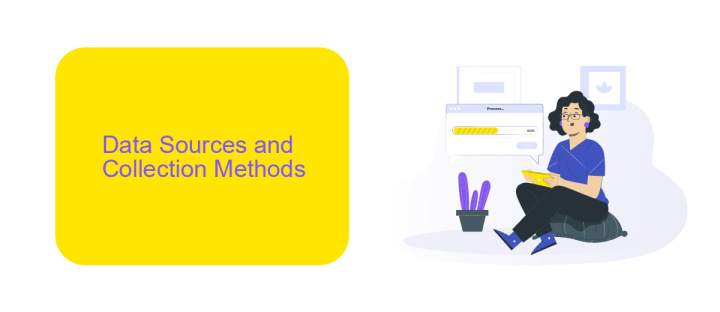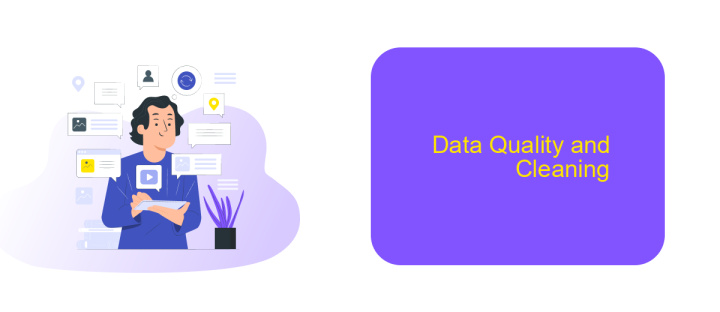Data Integration in Data Science
Data integration is a crucial aspect of data science that involves combining data from different sources to provide a unified view. This process enhances data quality, facilitates comprehensive analysis, and drives informed decision-making. As organizations increasingly rely on diverse data streams, effective data integration becomes essential for unlocking the full potential of their data assets.
Introduction
Data integration is a critical aspect of data science, enabling the seamless combination of data from different sources to provide a unified view. It involves consolidating data from various databases, applications, and systems, ensuring that the information is accurate, consistent, and accessible. Effective data integration is essential for making informed decisions, driving business insights, and enhancing operational efficiency.
- Combines data from multiple sources
- Ensures data accuracy and consistency
- Facilitates informed decision-making
- Enhances operational efficiency
One of the tools that streamline data integration is ApiX-Drive, a service that automates the process of connecting various applications and systems. By using ApiX-Drive, organizations can reduce the complexity and time required for data integration, allowing data scientists to focus on analysis and insights. This service supports a wide range of integrations, making it a versatile solution for businesses of all sizes.
Data Sources and Collection Methods

Data sources in data science are diverse and can range from structured databases to unstructured data like social media posts. Common data sources include relational databases, data warehouses, cloud storage, APIs, and web scraping. Each source provides unique challenges and opportunities for data integration. Structured data from databases can be easily queried and integrated, while unstructured data requires more sophisticated processing techniques. The choice of data source depends on the specific requirements of the project, such as the type of data, volume, and frequency of updates.
Collection methods for data integration involve various tools and technologies. API-based integration is a popular method, allowing seamless data flow between different systems. Services like ApiX-Drive facilitate this by providing an easy-to-use platform for integrating multiple data sources without extensive coding. ApiX-Drive supports numerous applications and automates data synchronization, ensuring that data is up-to-date and consistent across platforms. Other methods include ETL (Extract, Transform, Load) processes, web scraping tools, and manual data entry, each suited for different types of data and integration needs.
Data Integration Techniques

Data integration is a crucial aspect of data science, enabling the seamless combination of data from various sources to provide a unified view. Different techniques can be employed to achieve effective data integration, each with its own set of advantages and specific use cases.
1. **ETL (Extract, Transform, Load):** This traditional method involves extracting data from different sources, transforming it into a consistent format, and loading it into a data warehouse or database.
2. **ELT (Extract, Load, Transform):** Similar to ETL, but the transformation occurs after loading the data into the target system, making it suitable for large datasets and modern data lakes.
3. **Data Virtualization:** This technique allows real-time data access and integration without moving the data, providing a virtual view of the data from multiple sources.
4. **API Integration:** Utilizing APIs to connect different systems and applications, allowing seamless data exchange. Services like ApiX-Drive facilitate this process by offering easy-to-use tools for setting up and managing integrations.
Each of these techniques has its own strengths and is suited for different scenarios. Choosing the right method depends on factors such as data volume, real-time requirements, and the complexity of the data sources involved. By leveraging these techniques, organizations can ensure efficient and effective data integration, driving better decision-making and insights.
Data Quality and Cleaning

Ensuring data quality is a critical step in the data integration process within data science. High-quality data is essential for accurate analysis and reliable results. Data cleaning involves identifying and correcting errors, inconsistencies, and inaccuracies in the dataset, which can significantly impact the outcomes of data-driven projects.
Data cleaning is a multi-step process that includes several techniques to enhance data quality. These steps often involve removing duplicates, handling missing values, and standardizing data formats. Effective data cleaning ensures that the integrated data is consistent, accurate, and ready for analysis.
- Removing duplicates: Identifying and eliminating duplicate records to ensure data uniqueness.
- Handling missing values: Imputing or removing missing data points to maintain dataset integrity.
- Standardizing formats: Converting data into a consistent format for seamless integration.
Tools like ApiX-Drive can facilitate data integration by automating the transfer and transformation of data between various platforms. By leveraging such tools, organizations can streamline the data cleaning process, ensuring that their data is of high quality and ready for sophisticated analysis.
- Automate the work of an online store or landing
- Empower through integration
- Don't spend money on programmers and integrators
- Save time by automating routine tasks
Best Practices and Considerations
Effective data integration in data science requires careful planning and consideration. First, ensure data quality by validating and cleaning data before integration. This helps prevent errors and inconsistencies that can affect analysis. Additionally, maintaining proper documentation of data sources, transformation processes, and integration workflows is crucial for transparency and reproducibility. Using standardized formats and protocols can also facilitate smoother integration across different systems and platforms.
When setting up integrations, leveraging tools like ApiX-Drive can streamline the process. ApiX-Drive allows for automated data transfers between various applications and services, reducing manual effort and minimizing the risk of errors. It supports a wide range of integrations, making it easier to connect disparate data sources. Furthermore, it's important to continuously monitor and update integration processes to adapt to changing data requirements and ensure ongoing accuracy and efficiency. By following these best practices, you can achieve seamless and reliable data integration, which is essential for robust data science projects.
FAQ
What is data integration in data science?
Why is data integration important in data science?
What are the common challenges in data integration?
How can automation tools help in data integration?
What are some best practices for data integration in data science?
Time is the most valuable resource in today's business realities. By eliminating the routine from work processes, you will get more opportunities to implement the most daring plans and ideas. Choose – you can continue to waste time, money and nerves on inefficient solutions, or you can use ApiX-Drive, automating work processes and achieving results with minimal investment of money, effort and human resources.


